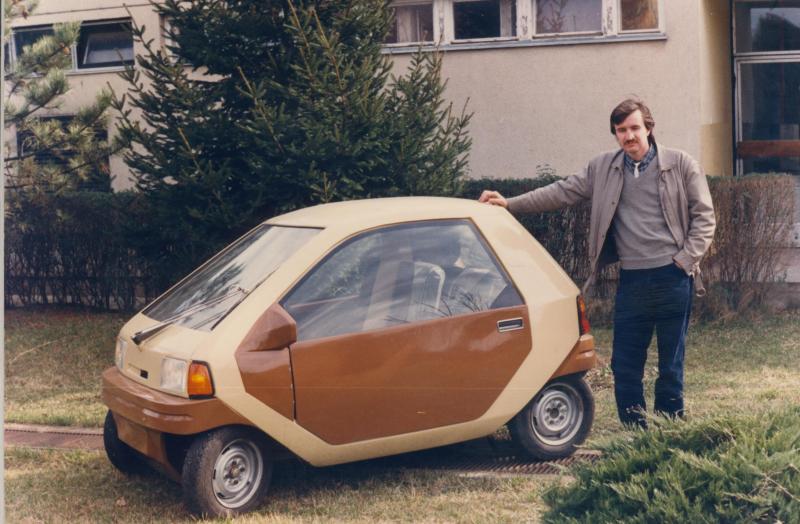Sigma 650 was a prototype of a city car created by József Csathó in the 80s. As a student at the University of Applied Sciences in the field of automotive engineering, he also attended design courses during his final year of education. His teacher was Laszlo Finta, the internationally renowned designer of Ikarus. Csathó’s exam task has been to design a small car for disabled people. László Finta was very pleased with the drawings and Csathó soon became a designer at Ikarus.
One day he had a meeting with the head of department of the Ministry of Transport and Post. She couldn’t imagine what kind of thing they could look for. As it turned out, his classmate Attila Baráth also noticed the drawings and took a copy of them which finally landed on the desk of the Ministry. Ministry officials were very pleased with the idea of a Trabant Hycomat wheelchair replacement vehicle.
After the conversation in 1987, Csathó was granted six months’ unpaid leave from Ikarus. AFT of Túrkeve received approximately 3.5 million HUF for the prototype. Csathó has begun work on the details of the microcar, which was called Terno 650. The first difficulties soon arose: a 1:1 scale plaster cast was needed. A local sculptor who has already worked on gypsum has been keen to take on the plodding job. While Csathó, the sculptor, and his colleagues were plastered with gypsum plaster, Baráth managed to procure various components with steam.
They borrowed an opposite engine from a police BMW motorcycle. The wiper was taken from the Ikarus bus. The two-and-a-half-ton model, now known as Sigma 650, was exhibited at the Budapest International Fair in 1987 and was a great success.
In the meantime, a working prototype has been completed. The side door also served as a ramp through which wheelchair access was possible. The wheelchair was located in the center of the dashboard. But Sigma was not only ideal for the disabled: there was room for two more passengers in the spacious interior besides the driver. Later, in the ’90s, the McLaren F1 super sports car followed a similar seating arrangement.
Meanwhile, the police have called their BMW engine. It was replaced by a Lombardini small diesel engine with a two-speed transmission. Later, the local electricians made him a step forward, making the shift automatic. The round front lights made the appearance of Sigma 650 even more attractive.
In 1988, Sigma 650 appeared at several exhibitions, but the project was overthrown by the change of regime. The plastic material negative sample and the slightly weathered prototype can be found today in Túrkeve, in the workshop of Ványai Ambrus Grammar School and Vocational School.


You must be logged in to post a comment Login